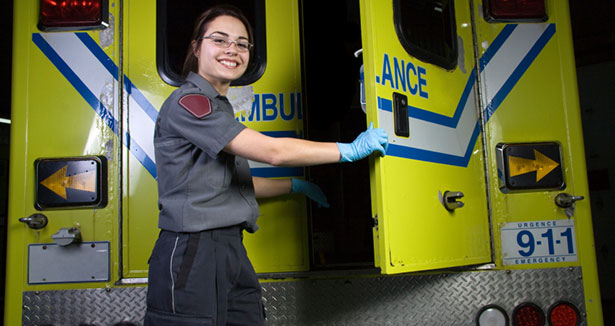
Standard BNQ 1013-110
Ambulances — Vehicle Specifications
|
This standard applies to ambulances with a combustion engine. The requirements for electric ambulances and combustion engine ambulances will eventually be in the same document, consult the planning of the transition work for more information (see the diagram in French only). |
In the field of health care, workers must have access to the best equipment possible to enhance patient recovery. For ambulance attendants, that means operating well-constructed, reliable ambulances that enable them to provide the best emergency medical care possible, while ensuring maximum passenger safety. The BNQ 1013-110 standard, for ambulance assemblers, covers this specific area. It sets minimum requirements, performance parameters and key criteria for ambulances used to transport patients, with respect to interior layout, functionality, external features, comfort and safety. For an ambulance to meet this standard, its specifications must meet a number of requirements:
- general requirements (construction, base vehicle equipment and national safety mark);
- specific requirements for the vehicle’s mechanical and electrical systems (for example, control consoles, power train, suspension, batteries, 120 V circuits and sirens);
- specific requirements for the ambulance module (for example, structure, doors and windows, interior layout, air conditioning and heating, signals, and exterior visibility characteristics).
-
Download standard
langue = en
12529 ANG BNQ 1013-110 Ambulances - Vehicle Specifications This new edition supersedes the edition dated September 13, 1999. 8121 FRN BNQ 1013-110 Ambulances - Caractéristiques du véhicule Cette nouvelle édition remplace celle du 13 septembre 1999.
-
Standards committee members
Number of committee members : 15
Patrick Bazinet Transports Canada Sylvain Bernier Ambulances Demers Daniel Chouinard Fédération des employés du préhospitalier du Québec Denis Doré Novacentre Technologie Stéphane Doyon Ambulance CTAQ, Québec Paul-Philippe Frenette Société de l'assurance-automobile du Québec Jean Gagnon Fédération de la Santé et des Services Sociaux (FSSS-CSN) Michael Harbec Crestline Coach Paul Holzapfel Wheeled Coach Industries Érick Hovington Ambulances 0911 Paramédic Matthieu Jean Centre intégré universitaire de santé et des services sociaux de la Capitale-Nationale Luc Jolicoeur Ministère de la Santé et des Services sociaux du Québec (MSSS) Richard Landry Urgences-Santé Benoît Michaud Fraternité des travailleurs et travailleuses du préhospitalier du Québec (Local 592 FTPQ) Richard Potvin Demers Ambulances
Certification offer
The certification of ambulances under the BNQ 1013-110 standard makes it possible to ensure high-quality vehicles. Ambulance assemblers simply need to submit an application for certification to the BNQ, which will check for compliance with the requirements of the BNQ 1013-110 standard and other requirements of the program. The other requirements are set out in the BNQ 1013-900 certification protocol, under six categories:
- quality system;
- quality control laboratory in the factory;
- qualifications and training of quality control staff;
- controls and testing in the factory;
- corrective actions; quality records.
This certification program is accredited by the Standards Council of Canada.
-
Download document required for certification
langue = en
12698 ANG BNQ 1013-900 Ambulances - Vehicle Specifications - Certification Protocol This English translation is based on the second edition of the original French document. 12482 FRN BNQ 1013-900 Ambulances - Caractéristiques du véhicule - Protocole de certification Cette nouvelle édition remplace celle du 3 mars 2000.
-
Certified businesses
Total number :1
1 Montérégie DEMERS, MANUFACTURIER D'AMBULANCES INC. 
-
Contact
Daniel Gagnon, P. Eng.
Program Leader
Bureau de normalisation du Québec
Cell.: 581-990-8778daniel.gagnon@bnq.qc.ca









